Garden-like countryside and a gleaming coast make this central Italian region a perennial favourite, says Fleur Kinson…
Photos by Getty Images
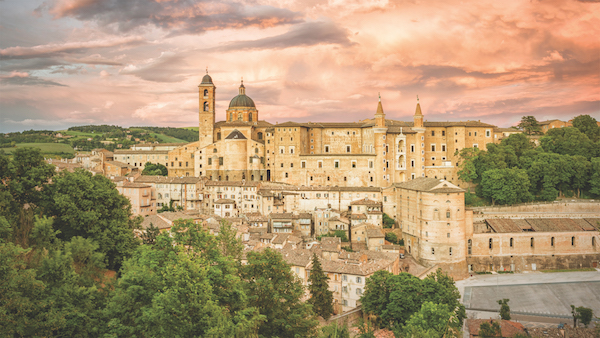
Set between the sparkling Adriatic and the majestic Apennines, Le Marche enjoys a splendid position. So much about this region seems well-placed and well-proportioned; there are just enough hills, just enough towns and villages dotted prettily across the landscape and just enough – rather than too many – people. Le Marche is an orderly, contented and prosperous sort of place, offering a famously high quality of life. The region regularly features in international surveys of the best places in the world to live or retire. (Most recently, in 2018, national newspaper Italia Oggi ranked three of Le Marche’s provinces in the top 20 of Italy’s 110 provinces for quality of life.)
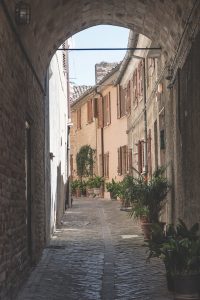
Le Marche combines great geography with a delightful way of living. In terms of landscapes, Le Marche offers a long line of clean, family-friendly beaches in its east, an undulating world of green and gold hills in its centre, and handsome rounded mountains in its west. Well-maintained towns crown rises in the land, and many enjoy a lively calendar of annual festivals and events that bring everyone together. Le Marche is full of warm and supportive communities, and the crime rate across the region is very low. Lovers of the urban whirl might be disappointed in Le Marche, but lovers of rural space and small-town friendliness will not. There are no big cities in this region and little heavy industry, and yet the employment rate is above the Italian national average. Many Marchigiani are engaged in the traditional manufacturing sector, producing shoes, clothing, furniture, electrical appliances and so on.
For all its general tranquility, Le Marche is surprisingly well-connected and easy to reach. International airports at Ancona and Pescara link the region with the UK, Belgium and Germany, and if you fancy it you can hop across the Adriatic by ferry to Croatia and Greece. Meanwhile, the region’s road network is good, meaning that a house out in the ‘remote’ countryside isn’t really so remote at all. It’s pretty easy to get to and from Le Marche, and to get round the region when you’re there.
Marche’s market
Le Marche first became popular with foreign homebuyers a couple of decades ago when word got out that here was a place as gorgeous as Tuscany but with homes at a fraction of the price. Early buyers were especially keen on buying up old country ruins and restoring them, and in recent years many of these beautifully restored houses have come up for sale. Le Marche’s property market has seen various slight changes and trends over the past twenty years, but the current situation is that this is still a remarkably affordable region in which to buy a home. Rural houses, for example, can be had for about half of what their equivalents would cost in Tuscany. There’s plenty of value for money available across all sorts of property types and locations in Le Marche. You might get a rustic ruin for €50,000-€100,000, an immediately inhabitable townhouse or apartment for €60,000-€200,000 or a beautifully restored old farmhouse for €250,000-€450,000.
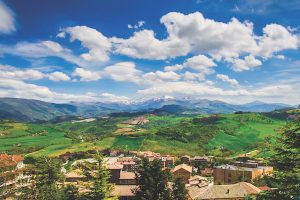
In terms of where in this region you should focus your property search, obviously only you know whether you fancy a seaside home, a house in the rural hills or a bolthole out in the mountainous wilds. But which tend to be the highest and lowest priced parts of Le Marche? In a nutshell, homes cost most on the coast, significantly less a few miles inland and least of all out in the mountainous east. Seaside homes are costliest because of buyer competition; they’re highly sought after by both international and Italian buyers. Prices drop markedly as you move back from the sea and climb into Le Marche’s lovely hills. Henk Soer of ItaliaCasa says, “The lowest square metre prices can be found in the less populated areas more inland. Here you can buy a simple farmhouse from about €500 per sqm gross floor area, while restored homes should easily yield €1,500 per sqm. The most expensive areas are found on the coast, in cities like Pesaro and Ancona, for example, and around the university cities of Urbino and Macerata, where the Italians like to live because of the facilities, the accessibility and the nearby sea. Here prices can go up to around €3,000 per sqm.”
As for property types, there are modern-built apartments and villas and older townhouses available along the coast. Generally these are immediately inhabitable properties and require little or no updating because they won’t have stood empty for any great deal of time. Restoration projects and older domestic properties of all kinds are much more numerous inland (but we’ll be looking at restoration projects in greater depth in a moment). Jane Smith of Magic Marche notes that, “Townhouses and apartments have seen increasing interest since 2017, as buyers realise the pleasure and value to be had in a ‘lock and leave’ property.”
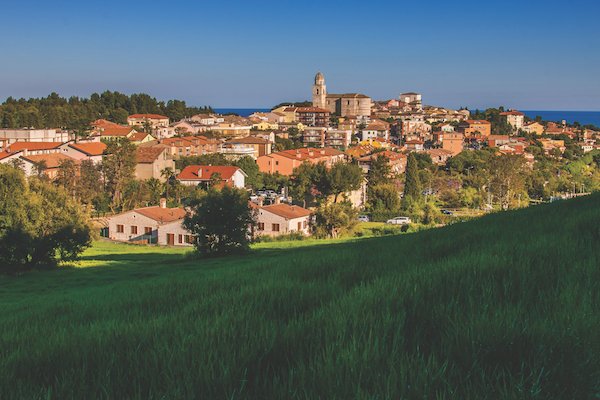
Le Marche has long been a place for restoration and rebuilding projects. A great many overseas buyers have come to the region to buy an old tumbledown ruin in the countryside and turn it into the house of their dreams – lovingly restoring it or knocking it down and rebuilding it to meet their exact taste and requirements. There are still plenty of opportunities to do this in Le Marche, but you should be aware that doing a restoration or rebuild is no longer as cheap an option as it might have been ten years ago. That said, it may still be the best way for you to get the house you want. Alternatively, depending on what you’re after, you might prefer the ease and affordability of a rural home that has already been restored by a previous buyer.

Jane Smith of Magic Marche says, “Restored country houses remain the most popular property type for buyers at the moment. A three-bedroomed one will cost between €220,000 and €375,000. Such houses represent great value; someone else has spent the ‘big money’ doing its restoration, has enjoyed maybe ten years of owning the home and is now ready to sell on and return to their homeland. The prices for these properties are competitive for two main reasons: the owners don’t expect to make a profit on their sale (annual Italian property inflation is close to zero), and there is a constant and large supply of this type of property so prices are always very competitive.”
Meanwhile, Kevin L. Gibney of PropertyForSaleMarche.com says that the question of whether it’s better to buy ready-restored or to buy and restore is not a question of saving money. “It’s more a question of what the buyer wants,” he says. “If you want your preferred building style, your taste in finish materials, state-of-the-art earthquake-proof construction and a top energy-efficiency profile, to name just a few criteria, then doing a new-build is your best bet. Yes, on a comparison of costs per square metre, a house built 10 to 15 years ago will cost less than one you build today. But, I would argue, you’re not comparing like for like. The new-build is a superior overall product – structurally, functionally, aesthetically and personally. So it all comes down to how much the buyer has to spend. If you can spend a bit more per square metre, the new-build is best. If not, a very decent restored house can be had for a reasonable price.”
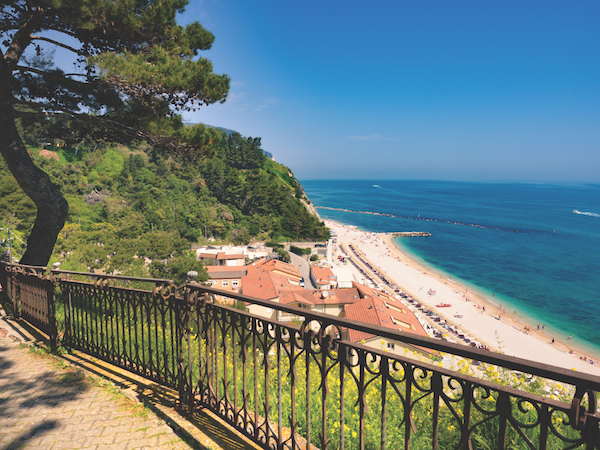
Holiday rentals
Ever since word got out 20 years ago that Le Marche was something special, visitor interest has never abated. The perennially strong supply of visitors has persuaded a great many overseas buyers to offer holiday rentals on their property to cover some of their costs. There’s no reason not to consider doing this yourself if you fancy it. Obviously some areas and facilities will make your home more appealing than others, so depending on how much clientele you want, it’s worth bearing such factors in mind.
Visitors come to all three of Le Marche’s landscapes – the beaches, the rural hills and the majestic mountains – and you could reasonably expect to attract holiday rental clientele to a property in any of them. However, as you’d expect, some areas see much more interest than others. The seaside is, naturally, the main recipient of summer holidaymakers in Le Marche, and you could expect to fill all the summer weeks in a property’s rental calendar if you wished to. In second place for visitor popularity is the region’s hilly hinterland – in particular anywhere within forty minutes of the sea. Plenty of people come to enjoy the peace and rural beauty in this area, and seek a charming old property to stay in for a week or two – usually any time from the late spring to early autumn. The least popular part of Le Marche with visitors is generally its mountainous wilds, although some highland stretches are better-visited than others, such as the enchanting Sibillini Mountains area of the southwest, which attracts a fair number of hikers and walkers.
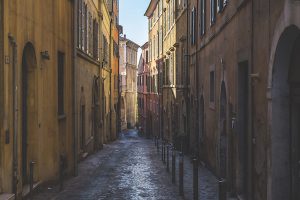
All the usual advantages apply when it comes to maximising holiday rental clientele. The majority of clients seek a home with two bedrooms. An outdoor space of some kind is always desirable – a balcony, patio, terrace or courtyard. If the home is a seaside one, the closer it is to the shoreline, the higher the rental rate it commands. Water is a big plus in the countryside too, with a pool always making a property more attractive to rental clientele. A lovely view across the landscape usually helps too.
Other nationalities
Jane Smith of Magic Marche says, “The rental market is still very strong,” and she notes that “Dutch and English renters remain at the forefront.” So, if you’re interested in maximising your number of visitors, be sure to target other northern European nationalities in your marketing. You might consider including a Dutch translation on your website, for example. Sure, the Dutch speak superb English, but it’s a nice touch to show you’re specifically welcoming a nationality with a known love of Le Marche!
Useful contacts
ItaliaCasa
Magic Marche
Property For Sale Marche
For more about the property potential of Le Marche, check out our Regional Guide
Le Marche property picks
[slideshow_deploy id=’21958′]
